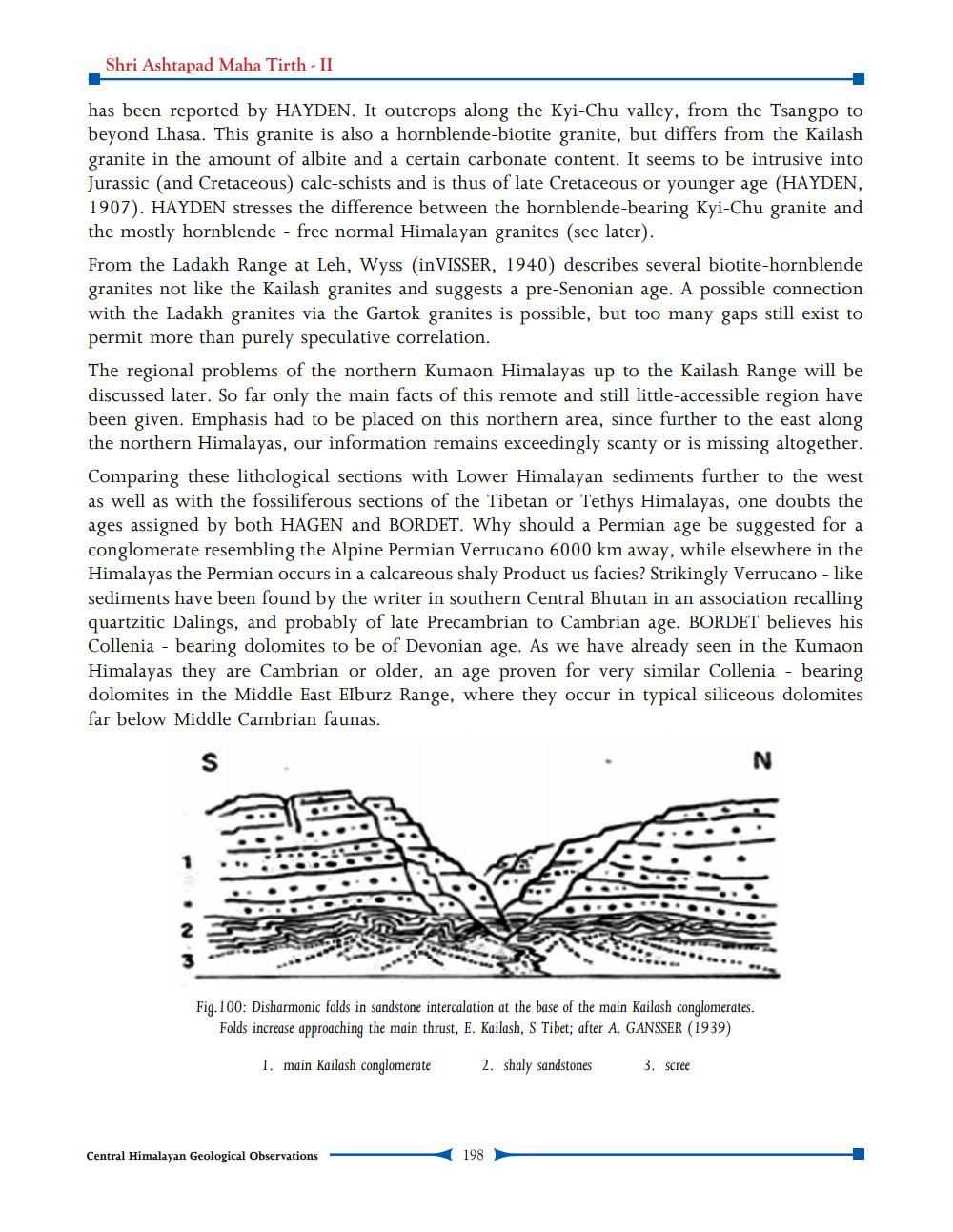________________
Shri Ashtapad Maha Tirth - II
has been reported by HAYDEN. It outcrops along the Kyi-Chu valley, from the Tsangpo to beyond Lhasa. This granite is also a hornblende-biotite granite, but differs from the Kailash granite in the amount of albite and a certain carbonate content. It seems to be intrusive into Jurassic (and Cretaceous) calc-schists and is thus of late Cretaceous or younger age (HAYDEN, 1907). HAYDEN stresses the difference between the hornblende-bearing Kyi-Chu granite and the mostly hornblende - free normal Himalayan granites (see later).
From the Ladakh Range at Leh, Wyss (inVISSER, 1940) describes several biotite-hornblende granites not like the Kailash granites and suggests a pre-Senonian age. A possible connection with the Ladakh granites via the Gartok granites is possible, but too many gaps still exist to permit more than purely speculative correlation.
The regional problems of the northern Kumaon Himalayas up to the Kailash Range will be discussed later. So far only the main facts of this remote and still little-accessible region have been given. Emphasis had to be placed on this northern area, since further to the east along the northern Himalayas, our information remains exceedingly scanty or is missing altogether. Comparing these lithological sections with Lower Himalayan sediments further to the west as well as with the fossiliferous sections of the Tibetan or Tethys Himalayas, one doubts the ages assigned by both HAGEN and BORDET. Why should a Permian age be suggested for a conglomerate resembling the Alpine Permian Verrucano 6000 km away, while elsewhere in the Himalayas the Permian occurs in a calcareous shaly Product us facies? Strikingly Verrucano - like sediments have been found by the writer in southern Central Bhutan in an association recalling quartzitic Dalings, and probably of late Precambrian to Cambrian age. BORDET believes his Collenia - bearing dolomites to be of Devonian age. As we have already seen in the Kumaon Himalayas they are Cambrian or older, an age proven for very similar Collenia - bearing dolomites in the Middle East Elburz Range, where they occur in typical siliceous dolomites far below Middle Cambrian faunas.
S
Fig.100: Disharmonic folds in sandstone intercalation at the base of the main Kailash conglomerates. Folds increase approaching the main thrust, E. Kailash, S Tibet; after A. GANSSER (1939)
1. main Kailash conglomerate
2. shaly sandstones
3. scree
Central Himalayan Geological Observations
N
198




